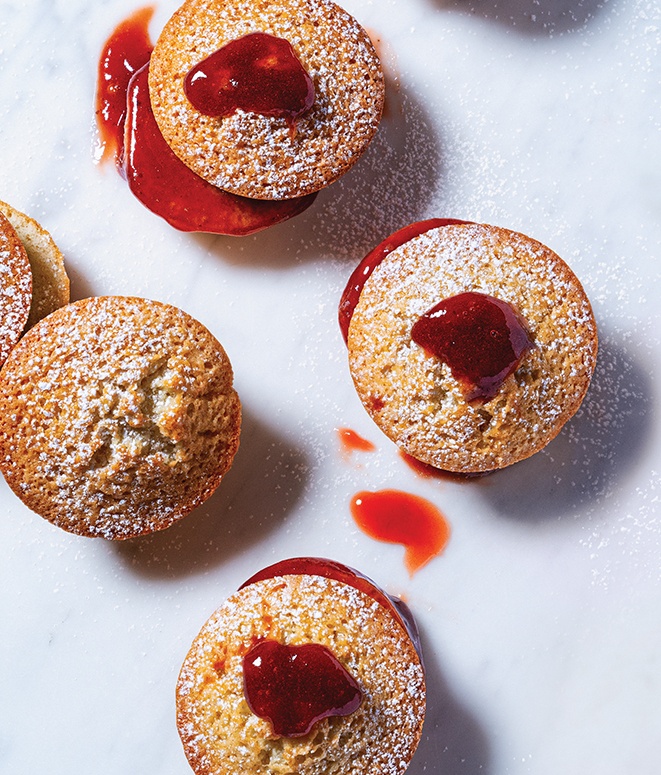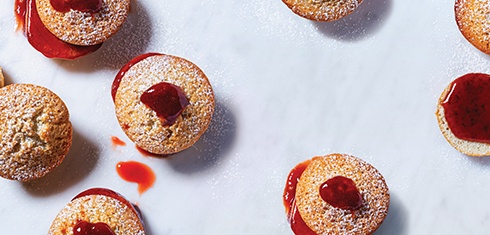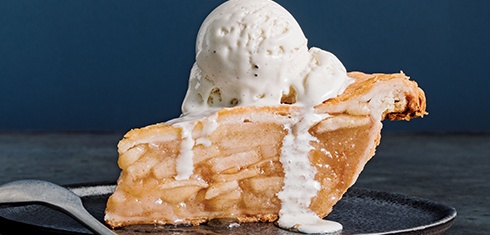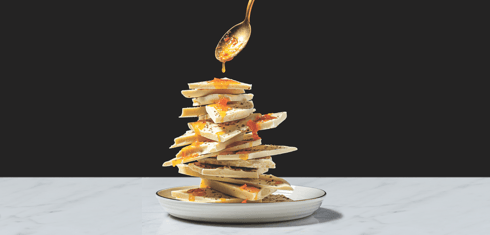By Kate Williams | Photography By Scott Suchman
Paul Arguin’s a-ha moment came with apple pie. Bill Corbett’s a-ha moment came with white chocolate. And for Christian Castillo? It was the cheesecake. For all three pastry chefs and bakers, these were the moments when changing from working with an oven or stovetop to an immersion circulator completely transformed their desserts.
MIND THE GAP
Any apple pie baker knows that the greatest challenge in creating the classic fall dessert is “the gap.” That’s the space between the top crust and the filling, which forms after the crust sets and the apples cook down and become tender. It’s not a deal-breaker, flavor-wise—but it doesn’t make for the prettiest pie. Paul Arguin and Chris Taylor, who wrote the 2019 cookbook The New Pie (Clarkson Potter), care about aesthetics.
When the couple isn’t busy writing books or working for the Centers for Disease Control, where they are both scientists, they are baking powerhouses. They’ve taken home more than 600 national baking awards. It should come as no surprise, then, that they are fans of precision. This is where sous vide comes in.
While working on their cookbook, Arguin researched how to mitigate the apple pie gap. The most popular work-around is to pre-cook the apples on the stovetop. The problem? “You have so little control,” Arguin says. “Very quickly you can go from raw fruit to mush.”
He knew he was on the right track; he just needed to find a more foolproof method. Using an immersion circulator, the apples can be cooked to precisely 154°F (68°C) before being added to the crust and baked. “It’ll eliminate the gap,” Arguin says. “And the apples will actually be perfect.”
So perfect, in fact, that the resulting apple pie became the cover recipe for The New Pie, which uses sous vide to solve many of the issues at play in traditional fruit pies. “As fruits cook … they release liquid, they have to hydrate the thickener, and that mixture has to reach temperature so it’ll gel,” Arguin says. “The crust, at the same time, is cooking and so all of these things need to converge … to get an actual pie that works.”
In practice, this works out to fruit pies with many more steps than the average baker may expect. Depending on the fruit, it may need to be frozen solid first, then vacuum-sealed with sugar and spices, cooked sous vide, then separated from the cooking liquid. That liquid gets thickened and recombined with the fruit before being added to a chilled crust and, finally, baked. The results are worth it. “At so many levels it helps you stay in control of so many of the issues of your pie,” Arguin says. “I think that it makes a superior pie.”
GOOD TEMPERED
While tempering dark chocolate via sous vide is a reliable and popular use of the method, it’s not the only form of the confection that benefits from a water bath.
Take the temperature up—way up, to 203°F (95°C)—and sous vide can transform white chocolate from a one-note sweet to a pastry component that’s layered with malty, brown butter notes. One can, of course, also caramelize white chocolate in the oven, but an immersion circulator makes the process almost entirely hands-free and close to foolproof. It has also formed the basis of some of pastry chef Bill Corbett’s most recognizable desserts. “I have probably overused it over my years in pastry,” he says. Just follow Corbett’s career from wd~50 in New York to Michael Mina, Coi, and the Absinthe Group in San Francisco to see a path of caramelized chocolate cookie crumbs: caramelized white chocolate custard with beet compote and a cocoa nib crust at the Absinthe Group; caramelized white chocolate with huckleberry fennel compote and pistachio purée at Coi; caramelized white chocolate ice cream, and—why not?—caramelized white chocolate chip cookies. Corbett says he still uses the technique today at Salesforce, where he is executive chef.
Besides being easy to produce, Corbett says that the real advantage of sous vide for white chocolate is control. “If it’s something that I can improve and I can get a more direct result, consistently with sous vide, then I’m going to turn to it,” he says.
SAY CHEESECAKE
Pastry chef Christian Castillo, of Atlas in Atlanta, uses sous vide for a multitude of sauces and accoutrements—all the little things that make his elaborate desserts special. Especially cheesecake. Castillo’s is not cheesecake in the classic, towering New York style. Instead, it’s pipeable. It pops up frequently on Atlas’s seasonal dessert menu. Take the Autumn Donut, for example, a pumpkin-spiced dough with ginger ice cream, roasted pumpkin seeds, and pumpkin cheesecake. “It’s a really nice technique and it’s perfect for piping on the plated dessert,” Castillo says.
Plus, cheesecake is one of the easiest desserts for a home cook to make sous vide, Castillo says. Just cook it in small jars instead of pouches and it can be served straight from the jar. Castillo also uses sous vide to bring a bit of his home country to the dessert menu. “I like using it to make dulce de leche,” he says. “Like a true Argentinian, I only use milk, sugar, vanilla bean—and the sous vide.” The caramelized milk mixture has made an appearance in another donut, this time with roasted apple and raisins, lemon mascarpone cream, and spicy chocolate ice cream.
FRUIT FUSION
One thing all of these chefs agree on: Sous vide is particularly useful for fruit. Corbett likes to infuse stone fruits by vacuum sealing with a flavorful liquid such as white beer with coriander and orange (for peaches) or port wine (for cherries) and slow-cooking at 179°F (82°C). “When it’s strawberry season, we always make a consommé using sous vide,” Castillo says. This bright, tangy sauce is key to his strawberry shortcake, which comes to the table deconstructed into crisp cookies, white chocolate cream, lychee sorbet, and strawberry chips. And Taylor is a fan of using sous vide for a blueberry pie that takes on the texture of a basket of freshly picked fruit. “They’re cooked berries, but they’re still intact so you still get that burst of berry in your mouth,” he says. “To me that was really a revelation. It is really the freshest berry pie I’ve ever had.”
This article originally appeared in Sous-Vide magazine’s Fall/Winter 2019 issue.
Related RecipesVIEW ALL RECIPES
Olive Oil & Almond Financier
 Intermediate
IntermediateEnjoy this sweet sneak peek recipe from Sous-Vide's Fall/Winter 2019 issue, out October 29.
The Apple
 Intermediate
IntermediateChris Taylor and Paul Arguin—award-winning bakers behind The New Pie—share their recipe for the ultimate apple pie made using sous vide.
White Chocolate Coriander Brittle
 Beginner
BeginnerBright citrus balances creamy spiced chocolate in this easy sweet snack.
Related Articles VIEW ALL ARTICLES
Chefs & Personalities
Made in Thailand
Chef Ian Kittichai melds Thai tradition with innovative modern updates—and he’s building a culinary empire in the process.
Read More >Tips & Techniques
Three Ways to Sous Vide in Your Home Bar
From infusions to syrups, cooking under vacuum can create inventive flavors while saving time mixing drinks.
Read More >Dining
Chocolate Is Love
Valentine’s Day is the perfect excuse to indulge in chocolate, one of history’s most beloved treats. Here are our favorite recipes that combine the seduction of chocolate with the science of sous vide.
Read More >



